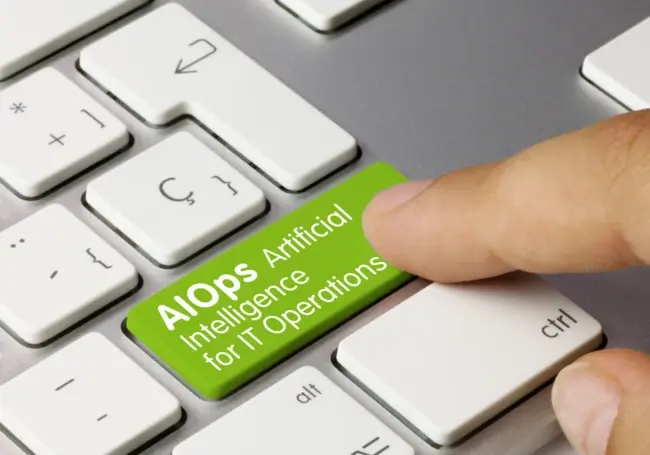
Organisations all around the world are taking notice of the rapid rate of change in the information technology (IT) industry. Many people working in this sector are tasked with monitoring multiple IT systems, applications and services across cloud, on site and in hybrid working environments. They must also resolve problems quickly and maintain performance during working hours. IT operations have historically been characterised as reactive, frequently depending on dispersed tools and subject-matter specialists to address issues.
The industry's rapid use of distributed systems, cloud computing, and microservices means that operating in the same way as before isn't possible anymore. Utilising antiquated methods is not the answer, and the IT department is overloaded with notifications and data, making it challenging to determine the root of the problem. Add in the pressure of a rapidly evolving digital landscape and it's clear why older IT methods are struggling to move with the times. This is why more and more organisations are turning to artificial intelligence operations (AIOps).
AIOps, according to Gartner, is the application of contemporary automation, machine learning, and advanced analytics technologies to support IT operations both directly and indirectly. By transforming vast amounts of operational data into insights that can be put to use, AIOps helps businesses move from reactive firefighting to intelligent, proactive IT management. AIOps provides infrastructure leaders, DevOps engineers, and CIOs with a more effective and scalable method of managing digital services.
How AIOps Works
After defining AIOps, let's examine its practical applications. Usually, an AIOps platform — an integrated solution made to process, correlate, and act upon large volumes of IT operations data — is used to deliver AIOps. At the point of ingestion, these platforms must manage both real-time analytics and stored historical data. An AIOps platform, according to Gartner, "integrates big data and machine learning capabilities to support all primary IT operations functions through the scalable ingestion and analysis of the ever-increasing volume, variety, and velocity of data generated by IT." It basically involves allowing intelligent automation and end-to-end visibility throughout the IT environment. AIOps's primary function is to collect data from disparate teams, tools, and systems. Once this data is centralised, the platform applies machine learning and advanced analytics to:
- Filter signal from noise: AIOps can distinguish meaningful alerts from the background noise of system chatter, identifying anomalies and behavioural patterns that may signal larger issues.
- Perform real-time analytics: AIOps platforms provide real-time analysis of incoming data, offering immediate operational visibility. This instant insight empowers teams to respond quickly to serious incidents and prevent escalation.
- Diagnose root causes: AIOps pinpoints the root causes of outages and performance issues by linking events throughout the infrastructure stack. It can frequently propose practical solutions to address these problems.
- Automate response: AI-driven routing guarantees that alerts and suggestions are delivered to the appropriate teams. It often initiates automated resolution processes, resolving issues before they even impact users.
- Continue to learn: The system gains knowledge and gets better at identifying, prioritising, and fixing problems in the future with every encounter. This built-in adaptability helps IT teams manage changes effectively even as infrastructure evolves through DevOps updates.
In short, AIOps isn’t just about faster incident response, it’s about transforming IT operations into a proactive, predictive, and self-healing function.
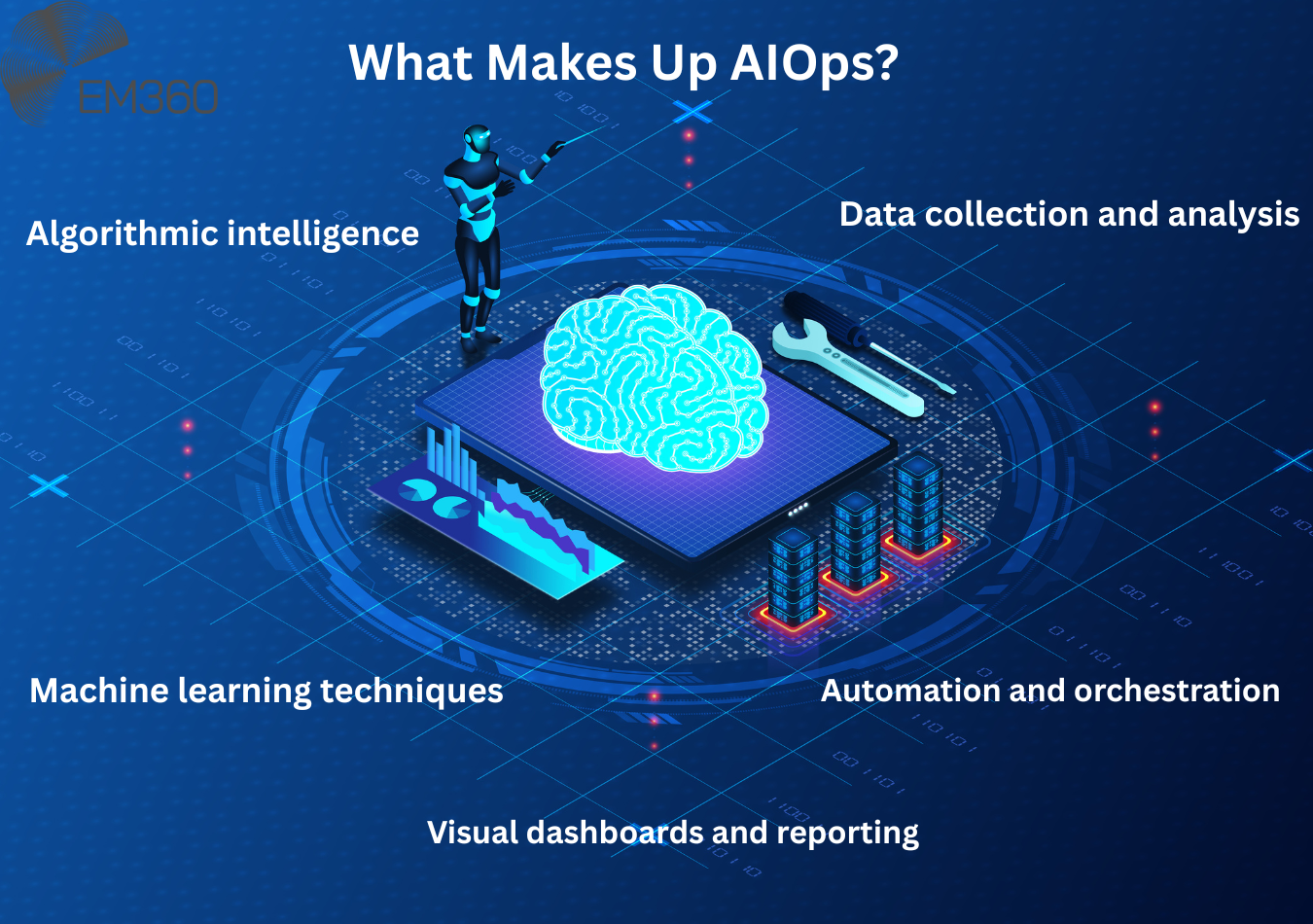
What Makes Up AIOps?
AIOps leverages a range of intelligent components that work together to improve IT operations:
Algorithmic intelligence: AIOps relies on algorithms that codify IT expertise, business goals, and best practices to replicate expert decision-making. Prioritising incidents, evaluating risk, directing actions, and serving as the basis for machine learning allow platforms to adjust to data that is constantly changing.
Machine learning techniques: Supervised, unsupervised, and reinforcement learning methods are all combined in AIOps systems. As these machine learning models process more data and adjust to shifting circumstances, they gradually grow more clever. Their ability to recognise trends, identify underlying causes, and anticipate possible problems before they affect operations is a result of this.
Data collection and analysis: AIOps collects data from networks, apps, and infrastructure and then transforms that data into insights using analytics. This aids teams and systems in problem-solving, performance optimisation, event management, and capacity planning.
Automation and orchestration: AIOps' primary difference is intelligent automation. Without human involvement, AIOps may automate processes like resource allocation, service restarts, and alert triggering based on preset criteria or real-time insights.
Visual dashboards and reporting: Effective visualisation tools are essential for translating complex system data into digestible formats. Dashboards, charts, and alerts give IT teams the contextual clarity needed to make quick and informed decisions, especially in fast-paced operational environments.
Why AI is Fueling the Rise of AIOps
Artificial Intelligence (AI) is not just a feature of AIOps, it’s the engine behind its rapid adoption and growing impact across IT operations. As organisations struggle to manage increasingly complex systems, AI offers the ability to process large amounts of data in real time, simulate human reasoning, and continuously learn from past patterns.
At the core of AIOps platforms, AI technologies such as machine learning, natural language processing, and anomaly detection allow systems to:
- Filter out irrelevant noise from a flood of system alerts
- Identify root causes and high-priority incidents with precision
- Recommend or execute remediation actions based on contextual data
This level of intelligence translates directly into faster decision-making, lower operational overhead, and improved system availability, all critical to maintaining service quality in today’s digital-first world. Business is all in on AI, fuelling record investment and usage, as research continues to show strong productivity impacts. In 2024, U.S. private AI investment grew to $109.1 billion, China’s $9.3 billion and the U.K.’s $4.5 billion. Generative AI saw particularly strong momentum, attracting $33.9 billion globally in private investment—an 18.7 per cent increase from 2023.
AI business usage is also accelerating: 78 per cent of organizations reported using AI in 2024, up from 55 per cent the year before. Meanwhile, a growing body of research confirms that AI boosts productivity and, in most cases, helps narrow skill gaps across the workforce. IT leaders who adopt AIOps early will be better prepared to deal with complexity, scale sensibly, and deliver dependable service performance as AI capabilities progress and become more broadly available.
The AIOps Market Landscape
The AIOps market is on an impressive upward trajectory, with the latest AIOps Market Report 2025 revealing rapid expansion from $8.91 billion in 2024 to an estimated $11.16 billion in 2025, representing a CAGR of 25.3%.
As high-performing, low-cost, and openly available models proliferate, AI’s accessibility and impact are set to expand even further.
Given that millions of people now regularly use AI for both work and play, the adoption of AI has surged at a never-before-seen rate. After a brief slowdown, corporate investment in AI rebounded. The number of newly funded generative AI startups nearly tripled, and after years of sluggish uptake, business adoption accelerated significantly in 2024.
AI has shifted from the margins to become a central driver of business value. Governments, too, are ramping up their involvement. Policymakers are no longer just debating AI—they’re investing in it.
Several countries launched billion-dollar national AI infrastructure initiatives, including major efforts to expand energy capacity to support AI development. Global coordination is increasing, even as local initiatives take shape. Rising data volumes, stronger DevOps integration, and growing need for real-time, predictive insights are expected to propel the AIOps industry to $32.56 billion by 2029.

Two key technology drivers are accelerating this momentum:
Integrating artificial intelligence: Artificial Intelligence remains a potent force for change in IT operations. Through noise reduction, pattern recognition, and performance optimisation, artificial intelligence (AI) helps businesses make better decisions more quickly. Gradient Flow claims that there was a discernible increase in the adoption of AI, which went from 3.7% in late 2023 to 5.4% in early 2024, indicating a growing belief in its practical utility.
Growth in the spread of IoT devices: With over 19.8 billion devices expected to be connected by 2025, enterprise networks are becoming considerably more complicated. AIOps platforms offer intelligent, scalable monitoring and management capabilities that ensure performance and reliability across vast digital ecosystems in order to handle this deluge of data. The AIOps landscape is changing due to strategic relationships that go beyond technology.
Real-World Case Studies in AIOps Innovation
AIOps's tangible effects can be better understood by examining how top organisations are implementing these technologies in practical settings. These case studies showcase real-world applications and results achieved by implementing AIOps.
IBM Consulting and CloudFabrix:
IBM Consulting and CloudFabrix joined forces to supply AI-driven automation and observability solutions. The cooperation aimed to combine diverse data sources, implement machine learning for real-time decision-making, and streamline operational operations. By integrating IBM's enterprise IT knowledge with CloudFabrix's data-centric AIOps platform, the agreement helped organisations increase visibility across hybrid environments, decrease alert noise, and act faster in IT ecosystems. This partnership demonstrates how ecosystem collaboration is hastening the deployment of intelligent operations at scale.
Senser Technologies and eBPF:
Taking a platform-first approach, Senser Technologies launched a cutting-edge AIOps solution in September 2023, designed to deliver observability by tapping into the Linux microkernel. The platform leverages extended Berkeley Packet Filter (eBPF) technology to capture real-time telemetry at the system level without requiring intrusive agents. This enables IT teams to gain visibility into application performance, infrastructure behaviour, and network activity all with minimal overhead. By combining intelligence at the operating system level, Senser’s solution demonstrates how AIOps can evolve from traditional monitoring to holistic, context-rich operations.
10 Benefits of AIOps
AIOps is transforming how organisations manage and optimise their IT infrastructure. It provides companies they support with the following services:
1. Accelerated incident response
AIOps systems use data science and machine learning (ML) to address problems directly and increase operational effectiveness.This significantly reduces mean time to detect (MTTD) and mean time to resolve (MTTR), enabling teams to respond to incidents faster and more effectively.
2. Reduced alert fatigue
AIOps removes noise and only shows the most important problems by cleverly correlating and filtering warnings. By doing this, IT teams can prevent burnout and maintain focus on urgent problems.
3. Improved operational efficiency
A higher level of operational effectiveness. By automating repetitive processes like ticketing, performance tuning, and log analysis, AIOps frees up IT staff to concentrate on strategic objectives and innovation rather than tedious, manual labour.
4. Predictive and preventive capabilities
AIOps transforms IT from a reactive to a proactive approach by continuously analysing historical patterns and real-time data to deliver predictive insights that assist in preventing failures and performance deterioration.
5. Visibility across hybrid environments
AIOps platforms help teams with an up-to-date picture of system health by aggregating and contextualising data from in-house systems.
6. Reduced downtime
AIOps enables teams to take action before minor problems turn into outages. Organisations may maintain greater levels of uptime and provide a more dependable customer experience by reducing service interruptions.
7. Customer experience
The client experience is improved by AIOps's ability to guarantee dependable IT services and facilitate quick problem solving, reducing service interruptions, boosting responsiveness, and preserving consistent performance across digital touchpoints.
8. Enhanced decision making
AIOps gathers and examines both historical and real-time data. Relevant stakeholders can make data-driven decisions, able to foresee future requirements, and match their IT strategy with business objectives thanks to this contextual insight.
9. Cross-team collaboration
By breaking down data silos and offering a unified operational view, AIOps fosters better collaboration between DevOps, ITOps, and Site Reliability Engineering (SRE) teams.
10. Cost optimisation
Using predictive analytics and intelligent resource management, AIOps helps businesses prevent overspending on unnecessary additions. It allows them to accurately size their infrastructure. Businesses have lower running costs and better use of their IT budget.
Challenges of Adopting AIOps
AIOps has many benefits, however there are drawbacks to its use. Access to qualified resources, integration with current systems, and the requirement for dependable, high-quality data are examples of technical obstacles.
In order to facilitate effective deployment, businesses frequently need to update portions of their infrastructure, and AIOps platforms must be interoperable with a variety of tools and formats used in complicated IT settings.
Organisations encounter operational and cultural issues in addition to technological ones. Adoption may be hampered by resistance to change, especially in situations where workers are used to manual processes.
Businesses should adopt a planned, phased strategy to overcome these obstacles: pilot AIOps in certain regions, match deployment to business objectives, and encourage cross-functional cooperation to increase team trust and maturity.
Upskilling staff to understand and use AI-driven information requires training and change management costs. Maintaining accountability and making sure decision-making procedures are transparent are additional factors to take into mind as automation grows. Stakeholders must take proactive measures to solve these issues as AI becomes more and more integrated into IT procedures.
Practical Steps for AIOps Adoption
As an organisation you don’t need a wide-spread, ultra-complex IT environment to start realising the benefits of AIOps. Adoption at an early stage can put your company in a better position to develop as demands increase. IT leaders may create the foundation for an effective AIOps strategy by progressively integrating critical capabilities and increasing proficiency. Here's how to get going:
Step 1 - Start small
Start with specific use cases that have observable, quantifiable results, such as enhancing incident detection or automating tedious processes. These quick wins build confidence, demonstrate return on investment (ROI), and help secure stakeholder buy-in.
Step 2 - Invest in knowledge and skills
A strong understanding of machine learning and artificial intelligence is vital for AIOps projects to succeed. As an organisation, determine the skill gaps in your teams and identify individuals to upskill, train, or strategically hire in fields like DevOps, machine learning, and data science.
Step 3 - Experiment with open-source tools
Before committing to large-scale investments, explore open-source machine learning, analytics, and observability frameworks. Teams may test and validate AIOps concepts in a low-risk, economical setting with the help of these technologies.
Step 4 - Align with existing data resources
Collaboration is key here. Partner with business intelligence, data engineering, or analytics teams who already work with large-scale datasets. Their experience can accelerate your AIOps journey and avoid redundancy in tooling and expertise.
Step 5 - Standardise system infrastructure
Adopting system infrastructure as Code (IaC) and unified automation practices not only streamlines operations but also creates a stable foundation for AIOps integration. Consistency across your organisation is important for effective data correlation and automation.
Step 6 - Think long-term
AIOps is a developing capability rather than a plug-and-play solution. Think about your long-term objectives, the direction of your infrastructure, and the trade-off between purchasing platform solutions and developing your own tools. Scalability, adaptability, and governance should be top of mind.
Why Now is the Time to Embrace AIOps
An important change in how businesses handle IT operations is represented by AIOps. AIOps helps IT teams to work smarter, not harder, by incorporating automation, AI, and ML into infrastructure management. AIOps assists in bridging the gap between complicated systems and intelligent, effective operations, whether it is through automating root-cause analysis, managing alert fatigue, or planning for future demands. Businesses that start investigating AIOps now will be better prepared to manage the infrastructure issues of the future and satisfy rising customer demands. Organisations can no longer depend on antiquated, reactive methods to address network and IT problems since IT operations are reaching a critical tipping point. AIOps is saving the day by anticipating and fixing issues before they affect operations and improving the way IT teams operate as the pressing need for digital transformation brings with it ever-increasing data volumes and ongoing uptime strain.
To learn more, have a look at the EM360 podcast with professionals in the field to learn how other organisations are implementing these tactics, or read the most recent whitepapers that are influencing this discussion.






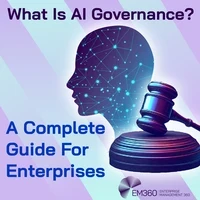




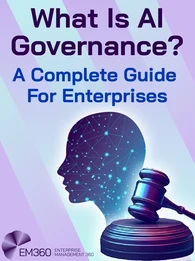
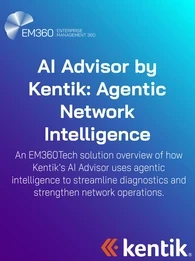

Comments ( 0 )